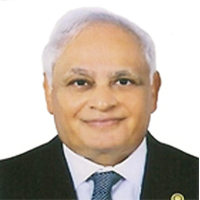Post-COVID Pulmonary Fibrosis: Pathophysiological Mechanisms, Diagnostic Tools, and Emerging Therapies
Published on: 9th May, 2025
OCLC Number/Unique Identifier: COVID-19; Pulmonary fibrosis; Antifibrotics; Lung
Post-COVID pulmonary fibrosis has emerged as a significant long-term complication among survivors of severe SARS-CoV-2 infection. This review highlights the underlying pathophysiology, diagnostic modalities, and recent advances in the diagnosis and management of post-COVID pulmonary fibrosis. As global cases of COVID-19 continue to evolve, understanding and addressing this emerging chronic respiratory condition is critical for long-term patient care.
Investigation of Bronchoscopy Associated Pseudo-infections
Published on: 6th May, 2025
Introduction: Bronchoscopy could lead to local spread of pre-existing infection, spread of infection from one patient to another if the bronchoscope is disinfected inadequately, or, isolation of microorganisms from bronchoscopic specimens in a patient who is clinically not infected, i.e., pseudo-infection. This study is one such investigation of an outbreak of bronchoscopic pseudo-infections in a tertiary care hospital.Materials and methods: Bronchoalveolar lavage (BAL) samples were inoculated onto MacConkey Agar and 5% Sheep Blood Agar and incubated at 37 °C overnight. The growths obtained on culture media were processed for identification and antimicrobial susceptibility on Vitek 2 Compact as per manufacturer’s instructions. To investigate the outbreak, 5 mL - 10 mL of sterile water was flushed through the channels of disinfected bronchoscope and collected in a sterile container. The samples were centrifuged and inoculated onto MacConkey Agar and 5% Sheep Blood Agar. The growths obtained were further processed similarly as the BAL samples were processed. Environmental swabs collected from the bronchoscopy unit were also processed as the procedure mentioned above.Results: Bronchoalveolar lavage of 3 patients in a period of 1 week were contaminated with multidrug resistant Klebsiella pneumoniae. Two out of five bronchoscope fluid samples were also contaminated with Klebsiella pneumoniae. Among the swabs collected from bronchoscope unit, Klebsiella pneumoniae was isolated from the detergent box of the endowasher. Conclusion: The risk of propagation of infection via a bronchoscope can be evaded by proper reprocessing and improving the sterilization practices.
Touch DNA Recovery from Non-porous Surfaces
Published on: 1st May, 2025
Touch DNA, the minute quantities of DNA deposited through skin contact, has become a valuable tool in forensic investigations. However, the recovery of touch DNA from non-porous surfaces remains a challenging task, requiring optimized collection and extraction techniques to maximize DNA yield, because non-porous surfaces have smooth, non-absorbing material properties. This review explores various non-porous surfaces such as glass, plastic, and metal, analyzing their impact on DNA recovery efficiency. Different collection methods, including swabbing, tape lifting, scrubbing, and vacuum collection methods, are evaluated to determine their effectiveness in retrieving minute amounts of DNA from these surfaces. Through a comparative analysis of existing studies, this paper identifies which collection methods work best for different non-porous surfaces and why choosing the right technique matters. Factors such as surface type, environmental conditions, and collection technique performed, time duration, and so on can affect DNA recovery, making it crucial to use the most effective approach. This review also emphasizes the need for standardized protocols to ensure consistent and reliable results in forensic investigations. Having clear guidelines can reduce errors, improve DNA analysis, and make touch DNA analysis more reliable in forensic investigations. By focusing on these aspects, this study aims to contribute to the ongoing efforts in refining touch DNA recovery strategies.
Investigation of Fuel Cells under Transient (Dynamic) Conditions to Improve the Efficiency of Polymer Electrolyte Fuel Cells in Dead-Ended Anode Mode: Review Article
Published on: 1st May, 2025
Polymer Electrolyte Membrane Fuel Cells (PEMFCs) operating in Dead-Ended Anode (DEA) mode present a promising alternative to traditional flow-through systems by simplifying design and reducing costs. However, their efficiency and durability are challenged by transient phenomena such as water accumulation, nitrogen buildup, and carbon corrosion throughout operation. This review investigates the dynamic behavior of DEA PEMFCs under dynamic operating states, aiming to improve their efficiency. By analyzing purge cycle optimization and transient response characteristics, we identify strategies to mitigate hydrogen loss, maintain voltage stability, and extend stack lifetime. The key findings indicate that precise purge scheduling and effective water management are critical for optimizing performance, with dynamic models providing insights into time-dependent processes. This study underscores the potential of DEA PEMFCs for high-efficiency applications provided transient effects are effectively managed.
Squamous Cell Carcinoma of the External Auditory Canal in Previously Treated Case of Adenoid Cystic Carcinoma of Parotid Gland
Published on: 1st May, 2025
Malignant neoplasms of the external auditory canal, middle and inner ear are rare. This anatomically complex region generates complicated three-dimensional specimens that can be a challenge for macroscopic and microscopic assessment [1]. The most common cause of malignancy involving the EAC and temporal bone is extension of cutaneous malignancy of pinna. Rare occurrences have been described in association with CSOM and sporadic cases arising in previously irradiated fields for the treatment of other head and neck cancers. The tissue diagnosis is relatively straightforward; however staging is a complex task that is best approached with consideration of clinical, radiological, and pathological findings [2].
The Role of Genetic Mutations in the HPGD & SLCO2A1 Genes in Pachydermoperiostosis Syndrome
Published on: 1st May, 2025
Pachydermoperiostosis, also known as Primary Hypertrophic Osteoarthropathy (PHO), is a rare genetic disorder. The three main features are: enlarged fingertips (clubbing), thickened facial skin (pachydermia), and excessive sweating (hyperhidrosis). PHO is characterized by problems with skin and bone growth. Patients with PHO usually have coarse facial features with oily, thick, grooved skin on the face, joint pain, enlarged fingertips and toes, and hyperhidrosis of the hands and feet. Symptoms vary individually; however, men generally present with more severe manifestations. X-rays can help check for features that are not noticeable to the naked eye. There are two genes that are associated with PHO: the HPGD gene, located on the long arm of chromosome 4 at 4q34.1, and the SLCO2A1 gene, located on the long arm of chromosome 3 at 3q22.1 - q22.2. Mutations in the HPGD gene are inherited in an autosomal recessive manner, and the condition is sometimes abbreviated as PHOAR1 or Touraine-Solente-Gole syndrome.
Invasive Magnusiomyces Capitatus Infection in a Patient Followed for Acute Myeloblastic Leukemia: A Case Report
Published on: 29th April, 2025
Magnusiomyces capitatus is a rare cause of invasive fungal infection in immuno-compromised patients. We report the case of magnusiomyces infection of the central nervous system, the lungs and sinus with a palatal lesion, in a patient treated for acute myeloid leukemia. While Magnusiomyces infections pose diagnostic and therapeutic challenges, a comprehensive understanding of their epidemiology, clinical manifestations, and microbiological aspects is essential to guide effective management. The patient improved under antifungal treatments despite a reduced sensitivity of the different antifungals to the antifungogram. The important delays between chemotherapy cycles and its reduced intensity due to the Magnusiomyces infection has made managing the anticancer treatment more challenging.
Anesthetic Management of a Rare Case of a Lactating Mother with Congenital Methemoglobinemia Undergoing Laparoscopic Surgery: A Case Report
Published on: 29th April, 2025
Background: Methemoglobinemia is an uncommon hematological condition in which hemoglobin contains iron in an oxidized (Fe³+) state with limited oxygen-carrying ability. It can be congenital or acquired. Anesthetic management of methemoglobinemia poses a great challenge, as there is a risk of refractory hypoxemic crisis in the perioperative period. Case: Here, we present a case of a 24-year-old female with congenital methemoglobinemia who presented with gallstone disease for laparoscopic cholecystectomy under general anesthesia. She had a deficiency of cytochrome B5 reductase, which contributed to 26% of methemoglobin levels on co-oximetry. Despite taking considerable precautions to avoid hypoxemic episodes and metabolic acidosis, an episode of desaturation happened at the end of the procedure, which was managed with intravenous methylene blue. The patient recovered without any hypoxemic insult. Conclusion: Anesthetic management of patients with moderate (20% - 30%) methemoglobinemia can be successful with extreme precautions to avoid events that can increase the methemoglobin levels and adequate preparation and availability of intravenous methylene blue.
Justification of the Principles of Emergency Care for Acute Pneumonia
Published on: 29th April, 2025
The action of modern emergency care for patients with AP, on the one hand, requires a wait-and-see period, which is unacceptable in cases of rapidly progressing inflammation. On the other hand, it uses methods that do not take into account the features of the disease mechanisms. All this creates conditions for an excess of complications and treatment failures. The accumulated facts on this problem indicate the need to revise the principles of treatment. Consequently, the most important initial step in this direction seems to be the correction of professional views in accordance with the classical provisions of medical science.
The Power of Inner Dialogue: The Impact of Self-Talk Techniques on Athlete Performance
Published on: 28th April, 2025
Self-talk is a pivotal psychological technique within sports psychology that significantly influences an athlete’s performance and mental resilience. It involves the process of athletes engaging in internal dialogue to achieve specific psychological objectives such as enhancing motivation, improving focus, and managing stress. This technique encompasses various forms of self-directed communication including positive affirmations, instructional reminders, and motivational statements. Understanding the different types of self-talk and their effects is essential for athletes, coaches, and sports psychologists who aim to develop effective mental strategies for athletic success.




